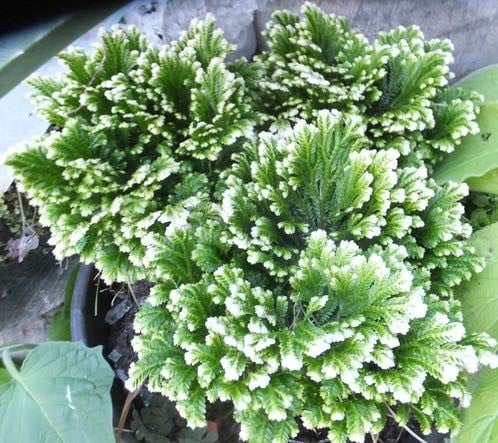
In any glasshouse or conservatory there are shady spots where the majority of herbaceous plants would not flourish even those we often choose for such places. As light levels fall choice narrows further becoming dominated by ferns and then only where it’s also moist enough. Well Selaginellas are not actually ferns, neither are they club-mosses but a distinct group of their own. The most common members you’ll find are S. Martensii, S. emmeliana the revoltingly named Sweat plant, and S. kruassiana the sweeter sounding Spreading clubmoss. Selection has produced several forms some with delightful variegation.
Anyway, to most intents and purposes the Selaginellas we commonly cultivate can be considered as ferns for these thrive in similar positions. Indeed these include several plants that loathe direct light only prospering in constant light shade. This makes them so useful for such difficult places as under benches and as house-plants for North facing bays and windows.
These do need frost free, warm even hot, constantly humid conditions. And those we grow the most demand peaty continually moist but perfectly drained compost. Be warned, any waterlogging, or drying out of their compost or their air or bright light can cause these to brown and die back from the tips, rapidly and irreversibly. This makes these either dead easy or soon dead depending on how well you match their demands.
One the plus side Selaginellas seldom pests or diseases. Neither do these demand much feeding, indeed too much may kill so be mean not generous. Re-potting may become necessary as clumps enlarge eventually and these are then suited to shallow trays rather than deeper containers. Likewise plants can be split and multiplied in trays in early spring. It is possible to grow these from the spores-but not easy so just buy your first specimens.
Oh but when you succeed these are become no effort at all and are just so attractive in their demur colours and such complicated texture.
One curious species is S. lepidophylla, the Resurrection plant or Rose of Jericho. When this is dried it curls up into a hard flattened reddish brown disc which placed in water unfurls and turns emerald green again. For the avid collector there are three hundred species from all hot continents with a dozen easily found and thirty or more known to cultivation.


